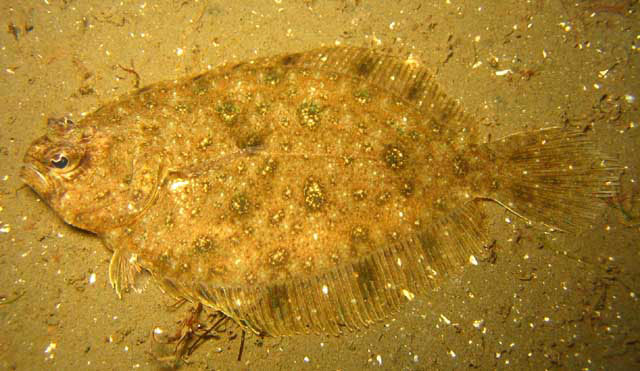| Paralichthyidae (Large-tooth flounders) |
| 34 cm TL (male/unsexed); max.weight: 1,471.0 g |
|
demersal; brackish; marine; depth range - 150 m |
| Indo-West Pacific: most coasts of Australia. |
|
Dorsal spines (total): 0-0; Dorsal soft rays (total): 65-74; Anal spines: 0-0; Anal soft rays: 51-60. Body brownish, 2 conspicuous ocelli above and below lateral line and 1 or 2 ocelli on posterior part of straight section of lateral line, a dark blotch at junction of straight and curved portions of lateral line. Upper profile of head distinctly notched in front of upper eye. A line connecting base of first dorsal-fin ray and posterior nostril on eyed side crosses maxilla. Origin of dorsal fin slightly before anterior margin of upper eye and just above or behind posterior nostril on blind side. Pectoral fin on ocular side with 11-12 soft rays (Ref 9774). |
| Occurs in estuaries and offshore over sand or mud bottoms (Ref. 9563). Feeds on various benthic animals (Ref. 9774). Marketed fresh (Ref. 9774) and is considered an excellent food fish. |
|
Least Concern (LC); Date assessed: 13 November 2019 Ref. (130435)
|
| harmless |
Source and more info: www.fishbase.org. For personal, classroom, and other internal use only. Not for publication.

